
Drumheads are some of the most noble and durable pieces of gear out there, taking beating after beating. Contrary to what the movie Whiplash leads people to believe, they don’t break with a single punch. If you treat them right, they consistently sing your praises and never fail to serve up just the timbre you want on a kit. Armed with the right set of heads, that battered set of shells in the corner of your basement can sound like a pristine set reserved for high-end studio time.
What kind of drumheads do you need for the sound you’re looking for? Single-ply, double-ply, hydraulic, clear, coated? There are so many types of heads on the market, you could fuse them all together and make the world’s biggest tom out of the Superdome. This guide will run through a bit of history on the modern drumhead and name the characteristics of basic types of heads. Grab your sticks and get ready to rock.
History
The drum is the oldest musical instrument in human society, so by logical extension, the drumhead is the oldest musical instrument part. The earliest instance of a taut membrane held in place over a hollow, cylindrical shell dates back to 8,000 BC in Babylonian and Sumerian cultures. Processed and tanned animal skin referred to as “rawhide” was stretched over both open ends of a hammered copper shell. While the main sources of rawhide heads were large mammals such as cows or deer, the Egyptians were known for using alligator rawhide. Turns out they look good on more than just wallets.
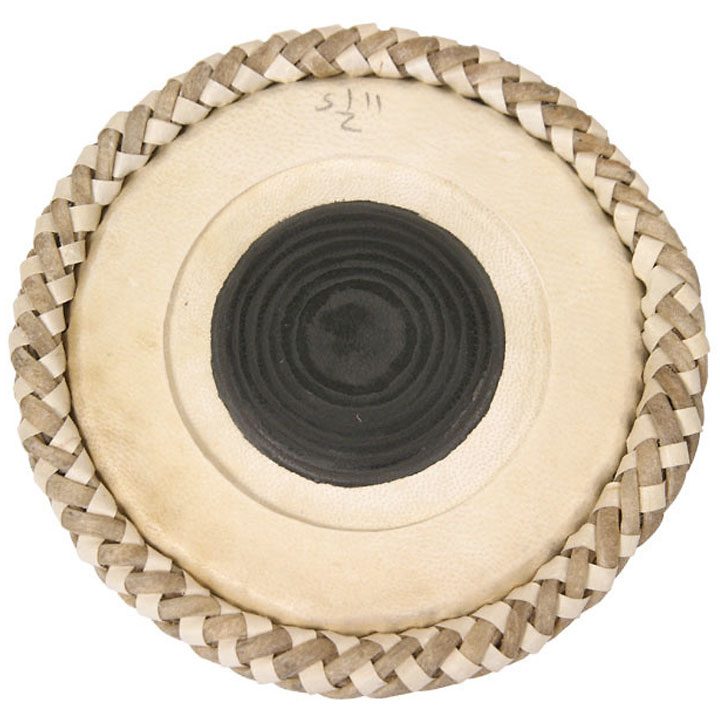
The evolution of the rawhide drumhead throughout history is a fascinating story deserving of its own article, so we won’t go into too much detail here. These instruments spanned geography and culture, appearing in variants throughout nearly every major society. The bodhran, the djembe, the tabla - all are examples of ancient drums still in production and the importance of drums through time.
Fast forward to the mid-20th century. The popularity of jazz and the emergence of rock n’ roll drive up the demand for drum sets. This is a problem for traditional rawhide drumheads, as they are notoriously time and energy-intensive to produce. In addition, they suffered from quick detuning in changing weather and broke easily in the high-volume environments of modern music. Enter Mylar.
Developed by DuPont in the years following World War II, Mylar proved itself as a resilient polymer film found primarily in military and industrial applications. From here, the history gets a little heated as to who first put Mylar to shell. Remo claims their founder, Remo Belli, was the first to develop Mylar drumheads in the late ‘40s/early ‘50s, marketing them under the now famous Weatherking banner. Evans, Remo’s main competitor, claims their founder, Chick Evans, created the first Mylar drumhead in 1956 at his headquarters in Santa Fe. Regardless, the modern drumhead was born from the ingenuity and perspiration of these two behemoths.
RELATED ARTICLE
Types of Heads
Plies
Drumheads are most easily categorized by the ply (head layer) thickness, the number of plies and the finish on the them. The amount of customization here is dizzying for a beginning drummer, so it’s best to try as many heads as possible in order to find the desired tone.
Single-Ply
These heads are the most popular choice across genres and decades. Versatile, responsive and crisp, the single-ply head finds itself at home in sedate jazz, modern fusion or hard rock. Comprised of one sheet of material - usually a polymer - and ranging in thickness from 7-10 mil, single-ply heads are labelled under Diplomat and Ambassador (the industry standard) for Remo and under Genera and G1 for Evans. Certain single-ply heads are made of an even thinner 3 to 5 mil layer intended for the resonant head of the snare, or the “snareside”.
Resonant heads, i.e. the bottom head of a drum, are incredibly important in deciding your drum’s tone. Think of them as the gatekeeper to the sound generated by striking a drum. Too much restriction and the drum will sound muted and dead. Too little and the drum sounds toneless and brittle. Single-ply heads are favored as resonant heads regardless if a single or double-ply head is on the batter. A medium-weight single-ply head provides a wide sonic spectrum to work with based on your tuning and can act as the Swiss Army Knife to your kit’s tone.
Double-Ply
Double-ply heads are comprised of two single sheets of material typically around 7 mil each. These are the heavyweights. They can take a thrashing, last for an eternity and keep a focused lock on a drum’s timbre. Double-ply heads provide a deeper, fatter sound than their single-ply brethren, making them a favorite amongst metal, shoegaze, stoner rock and other genres flexing a lot of decibels. Double-plies are found in Remo’s Emperors and in Evans’ G2 series.
RELATED ARTICLE
Finishes/Types
Unlike the finish of a guitar, the finish of a drumhead plays a far more pivotal role in the head’s character and, by association, your drum’s sound. The finish and/or type of a drumhead determines whether that single-ply you just bought is best suited for the resonant head of a tom, the front end of a kick or the batter head of your snare.
Clear
Clear drumheads are made solely of the ply’s material with nothing added. This absence of extra material allows for greater projection and attack in comparison to other drumheads. Clear drumheads are almost unanimously the choice for resonant heads for this reason. If a brighter, louder sound is what you’re after, clear heads might be your go-to.
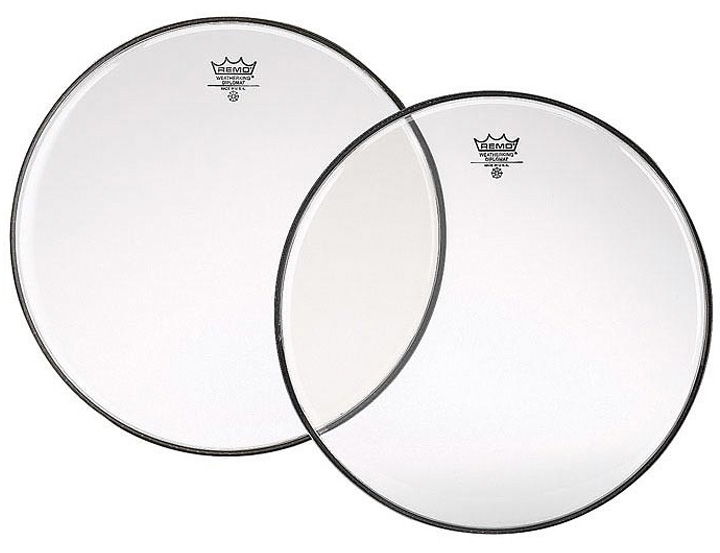
Coated
Coated drumheads feature an additional, thin layer of typically white polymer on top of the head. In addition to providing a vintage look reminiscent of rawhide, coated drumheads make for a drier, crisper sound and warmer tone. If you’re interested in a head that offers controlled articulation for quieter environments or you’re a heavy hitter looking for a head that can go the distance, the coated drumhead is your weapon.
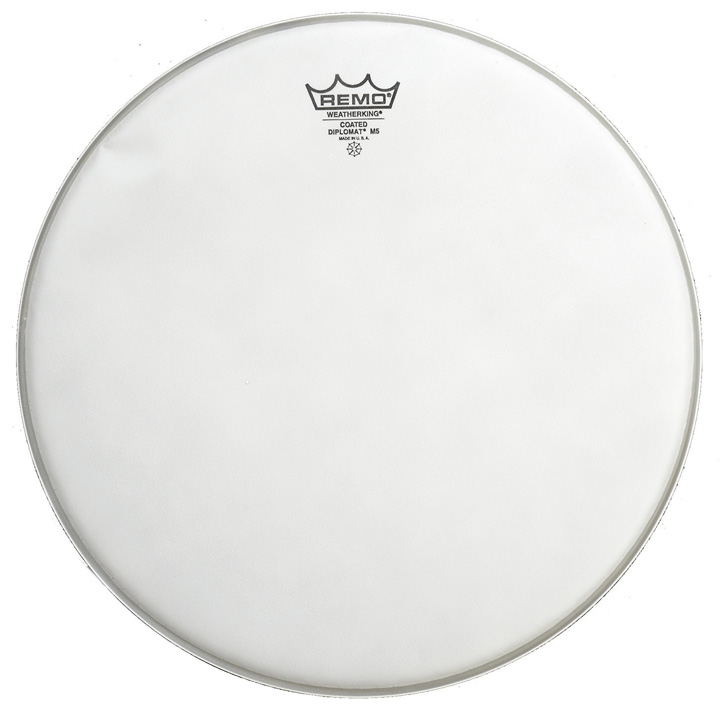
Hydraulic
Labelled as simply “Hydraulics” for Evans, hydraulic heads are an ingenious way to find a fatter sound. Hydraulic heads sport a thin layer of oil sandwiched between two heads for a thick sound. In addition to being an ideal choice for fat, low-end tom sounds, hydraulics also make a drum easier to tune due to the fluid in the head, making them great for drummers who want a quick set-up or for beginners. Remo finds a similar but modified concept in the Pinstripe series, which features a "dampening agent" between two plies from the head's edge to the black pinstripe which gives the drumhead its name.
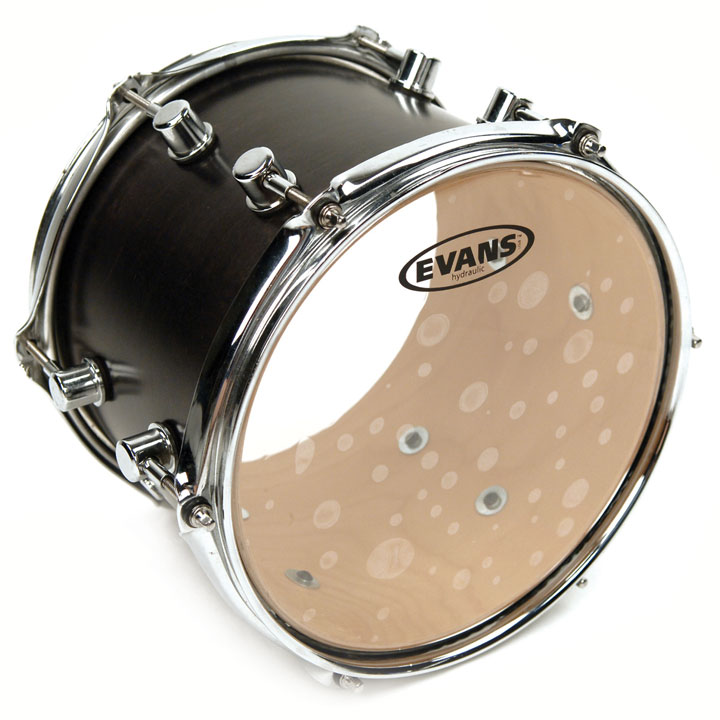
Black
Labelled under “Ebony” for Remo and “Onyx” for Evans, the black drumhead actually makes the sound of a drum darker. Single-ply black heads are made of one sheet of black polymer while double-plies are typically made up of one black polymer ply and one clear ply. These heads’ tendency towards a dark, focused sound make them a popular choice as resonant heads on bass drums.
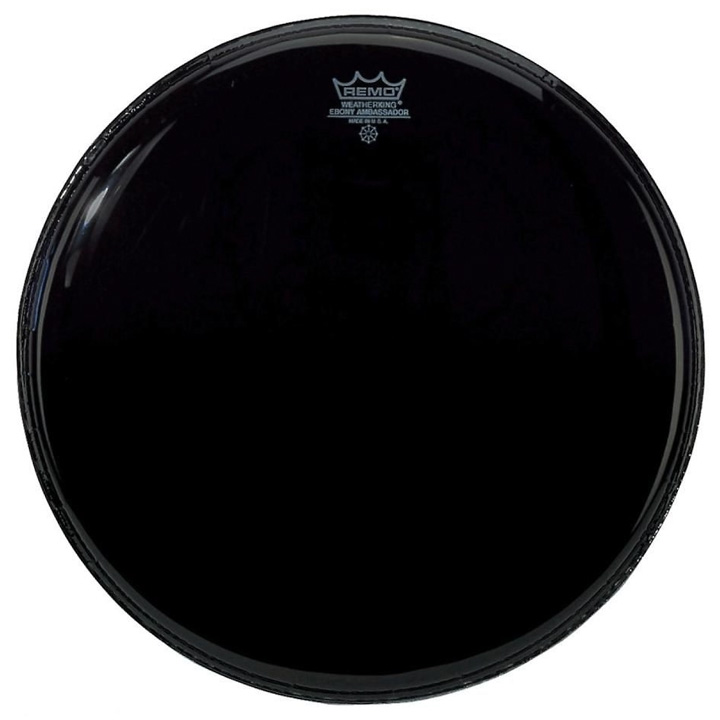
Pre-Muffled Heads
For the overtone stickler, pre-muffled heads are an attractive option. Marketed under “Powerstroke” by Remo and the “EC” series by Evans, these heads feature a built-in muffling ring on the underside of the head. Be careful, though: those ugly “overtones” might not be as pretty as you think.

The Overtone Problem
The word overtone is often confused with the natural resonance of a drum. Overtones are the higher frequencies to a fundamental pitch, i.e. “over” the founding “tone.” These higher frequencies are either complementary (a.k.a. harmonic) to the fundamental pitch, or antagonistic (a.k.a. inharmonic). Inharmonic overtones are issues that should be rectified through tuning. Tuning can be difficult on a drum due to the fact that as opposed to a guitar string, which has two nodes, or termination points of vibration, a drumhead can have upwards of eight. Practicing and studying drum tuning are crucial to getting the most tonal bang out of your drums and your heads.
Harmonic overtones can either be desirable or annoying depending on your tastes and playing environments. If you’re playing primarily by yourself and want that fat, focused sound you hear on recordings, heavier or pre-muffled heads are a great choice. If you’re playing in a band and gigging out, those muffled heads are barely making a dent in the mix. Harmonic overtones can sound abrasive standing alone, but in the middle of a show, they get your drums heard above that pesky guitarist’s wall of amps.
RELATED ARTICLE
Life of a Drumhead
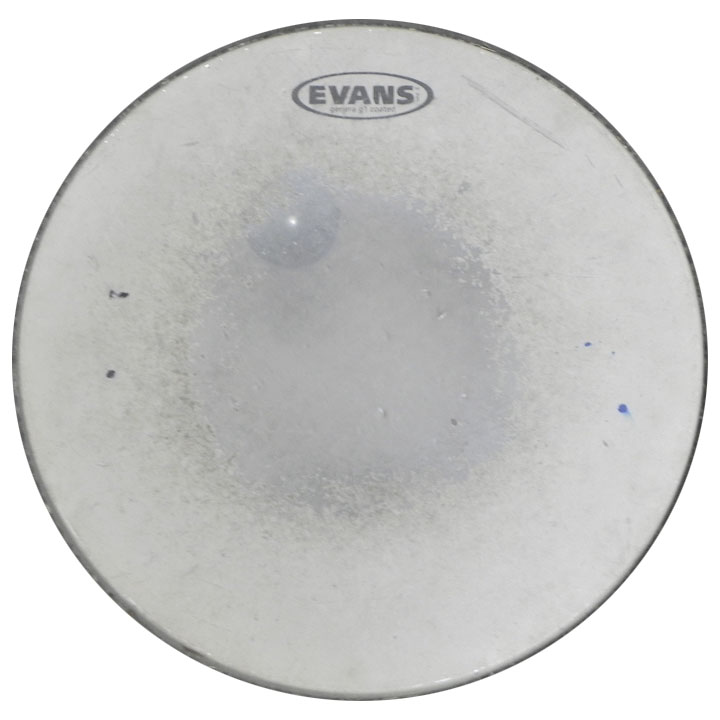
Even the toughest guy in the ring eventually gets knocked out. Changing out drumheads is a time-consuming but invaluable process that keeps your drums sounding crisp and new. The rule varies, but a batter head generally lasts three to four months. Resonant heads should be changed every six to nine months to retain projection. How hard the drums are hit and the condition are also points to consider, but eventually a batter head succumbs to “head fatigue”, or a lack of tension and response.

Not everyone finds old heads undesirable. Charlie Watts, drummer for the Rolling Stones, is famous for his light touch and preference for broken-in heads. One story has it that confetti fell at midnight during a New Year’s Eve party in the early ‘60s where the Stones were playing, confetti that was found lodged in the rim of Charlie’s snare ten years later as he was switching out his drumheads. Old heads offer a uniquely warm and muted sound that comes with age and good ol’ TLC.
This guide lays out a foundation of drum knowledge and pointers, but experience is the best teacher. Trying out as many as you can to get that sound is just as much fun as finally finding it. It’s like giving your drumset a new haircut or outfit every few months. Just remember one thing: anyone short of Floyd Mayweather is going to look ridiculous trying to punch through a drumhead.
For more info on acquiring and maintaining that perfect drum setup, take a look at our articles on Choosing Your First Drum Kit, All About that Bass Drum Pedal, and Choosing the Right Pair of Drum Sticks. Don't forget that all of your stick, drumhead, and drum accessory needs can be met with gusto throughout the site.



